- Home
- Joan Lowery Nixon
Secret of the Time Capsule Page 4
Secret of the Time Capsule Read online
Page 4
“Are we going home now?” Sean asked. He still had the creepy feeling that the Dickersons were hiding somewhere and might pop out and chase them.
“Not yet,” Brian said. “I’ve been thinking. I read something about letters from important people being valuable,” he said. “I wonder what that letter written by Governor William D. Stephens would be worth?”
“It’s not like Governor Stephens was a movie star or a president or anything like that,” Sean said. “Besides, how will we find out if the letter’s worth anything at all?”
“A philatelist might know,” Brian said.
“A who?”
“A philatelist,” Brian said. “A postage stamp collector.”
“Oh. Why didn’t you just say so in the first place?” Sean said. “Jabez’s grandfather owns a shop for stamp collectors. It’s downtown on Main Street.”
“He might be able to tell us about letters as well as stamps,” Brian said. “Let’s go talk to him.”
Mr. Amadi’s shop was small, but hundreds—maybe thousands—of postage stamps from around the world were displayed in glass cases. Sean wondered if the many drawers were also filled with stamps.
Debbie Jean sidled in the door, joining them at the counter.
“Go home,” Sean said.
“No. I’m helping you,” Debbie Jean told him.
They waited while Mr. Amadi sold a stamp to a customer. Sean began to forget about what a pest Debbie Jean was as he thought about how much fun it would be to collect stamps with kings and queens on them, or with horses, or …
“Hello, Sean. Hello, Debbie Jean,” Mr. Amadi said. “What can I do for you?”
Sean introduced Brian, who said, “We want to know what a letter from a former governor might be worth.”
Mr. Amadi shrugged. “I’m afraid I can’t answer that question,” he said. “There are collectors who specialize in letters and documents. I specialize in stamps. If you can tell me what stamp was on the letter, I could possibly answer your question. The stamp might, or might not, be worth something.”
Brian felt discouraged. “I saw a photograph of the letter, but I didn’t pay much attention to the stamp.”
“Yes, you did,” Sean said in surprise. “I said it was weird, and you agreed and asked me if I saw it, too.”
“I was talking about the strange expression on old John Williford’s face.”
“Oh,” Sean said. “I was talking about the stamp.”
“What was weird about the stamp?” Mr. Amadi asked.
“The airplane on it,” Sean said. “It was flying upside down.”
Mr. Amadi gave such a start he dropped the pencil he’d been holding. “What year are you talking about?” he asked. “What year was the letter mailed?”
“In 1918,” Sean answered.
Mr. Amadi clutched the edge of the counter. “Oh, oh, oh!” he said. “If what I suspect is true, you have seen a photograph of a very rare and valuable stamp. In 1918, the United States government issued one hundred airmail stamps before anyone noticed they’d printed the picture of the airplane upside down.”
“Would a stamp collector in 1918 have known the stamp was valuable?” Brian asked.
“A serious collector would know it was worth a great deal of money and that it would continue to grow in value,” Mr. Amadi said.
“How valuable do you mean?” Brian asked.
“It’s impossible to put a price tag on that stamp,” Mr. Amadi explained. “I haven’t seen any of them listed for sale in recent years. I do remember, though, that one of the upside-down airplane stamps sold at auction in 1979 for $135,000. And in 1989, a block of four sold for $ 1.1 million at an auction. I’m not sure exactly how much someone would pay today—maybe as much as $250,000.”
Brian and Sean looked at each other. “The gift for the city,” Sean said. “Now we know what it was!”
Brian frowned. “So does Councilman Williford.”
Mr. Amadi seemed puzzled. “Councilman Victor Williford is one of my clients. He inherited his grandfather’s excellent stamp collection and has continued it. Does he have the stamp?”
“We aren’t sure,” Brian answered, “but we’re doing our best to find out.”
8
BRIAN USED MR. AMADI’S phone to leave a message for Detective Kerry. In the message he told what he and Sean suspected and where they were going.
“This is a serious matter. Perhaps I should come with you,” Mr. Amadi said. “Me, too,” Debbie Jean said. Brian shook his head. “We’ve added up the facts, and Councilman Williford is our number one suspect,” he said. “But we don’t have the proof yet.”
As Sean and Brian headed north on their bikes, Sean asked, “Councilman Williford’s house is that big gray stone house on the hill. Right?”
“Right. And if Mr. Williford has the stamp, he won’t have had a chance to sell it yet, so it will still be in his house,” Brian said.
“I don’t think he’ll invite us in. He’ll know we’ve come looking for that stamp,” Sean said.
“We need an excuse to get inside,” Brian said. “Is your school selling any spaghetti supper tickets or band candy?”
“Wrong time of the year,” Sean said.
Brian grinned. “My school’s having seventh-grade career day next month. I’ll invite the councilman to be one of the speakers.”
It was a short, uphill ride to the large house Councilman Williford had inherited from his grandfather, so within ten minutes Brian and Sean were on the doorstep, ringing the bell.
The maid, who answered the door, listened to Brian’s explanation and let them in. “You’ll have to sit there and wait a few minutes,” she said, pointing to a carved, wooden bench. “Councilman Williford is entertaining some guests.”
As soon as she had left, Brian whispered to Sean, “Remember that article in California Pix? It said that John Williford kept his stamps on display in a special room next to the entry hall. Come on. We’ll have time to take a quick look.”
Sean followed Brian to a carved wooden door. The handle turned easily, and the boys stepped into the room. Brian flipped the light switch and shut the door behind them.
Stamps were everywhere. Some were framed and hanging on the wall. Some were in display cases. And there were books of stamps on shelves. Sean opened the cover of the nearest one and saw rows of stamps, each protected by small plastic pockets.
He groaned. “There are too many stamps! How will we ever find the upside-down airplane stamp?”
“It probably isn’t even in this room,” Brian said. “I guess that he’s hidden it somewhere else for now. Someplace very private, like his home office or his bedroom. Let’s try his office.”
As quietly as they could they left the entry hall. On the right was a large living room, and they could see a dining room beyond. On the left was a wide hallway and three closed doors.
Carefully, silently, Brian opened the first door. “This is it!” he whispered. He pulled Sean inside the room and turned on the light. Before them was a large U-shaped desk. On one end of the desk rested a computer and telephone.
“Look on the desk for the envelope,” Brian said.
But Sean grabbed Brian’s arm and pointed to a wastepaper basket. In it they could see an old, yellowed newspaper, a copy of California Pix, a stack of black-and-white photos of smiling faces, and a thick manila envelope. “That’s gotta be the stuff from the time capsule!” Sean said. “The letter with the upside-down airplane stamp must be in this room!”
Sliding doors at one side of the room suddenly rolled open. Councilman Williford stood in the doorway, scowling at Brian and Sean.
“So you know about the stamp” he said, holding up the envelope Brian and Sean had seen in the magazine. “I had hoped you wouldn’t notice it in the photo.”
“It’s not your stamp,” Brian told him. “It belongs to the city.”
“It belongs to me,” the councilman snapped. “My grandfather was foolish to give it away.”
/>
Brian began edging backward, pulling Sean with him, but Councilman Williford said, “Stay where you are. You won’t be leaving this house. I can’t afford to let you go.”
“There are two of us,” Brian said. “And only one of you.”
Councilman Williford smiled. “Then I’d better bring in some of my friends—the friends who helped me obtain the stamp.”
Hugh and Gene Dickerson squeezed into the doorway next to him. Brian gulped and Sean yelled, “Yikes!”
Brian and Sean hadn’t heard the door to the hall open, but suddenly Debbie Jean spoke from behind them. “Brian and Sean brought some of their friends, too,” she said.
“That’s right,” Miss Wegman said. “Mr. Amadi called me. He was worried about what the boys were up to by themselves, and I was, too.”
Mr. Vlado hobbled forward. “We’ve got extra help,” he said, and winked at Sean. “Some friends from the cemetery who don’t like the way you tampered with their time capsule.”
“And the police are on their way,” Mr. Amadi added.
“So don’t anybody move,” Debbie Jean said. She beamed at Sean. “I always wanted to say that.”
There were loud footsteps in the hall, orders from Detective Kerry, and soon the Dickersons and Councilman Williford were taken into custody.
“Let’s have a party and celebrate!” Mr. Amadi said.
“Right now!” Miss Wegman glanced at the contents of the wastepaper basket. “We’ll have a second opening of the time capsule.”
Brian looked at his watch. “Not yet!” he said. “Mrs. Jackson should be on hand when the fourth graders’ letters are opened. And as for Sean and me, we may have solved another case, but we’re going to be in big trouble if we get home late for dinner!”
All rights reserved under International and Pan-American Copyright Conventions. By payment of the required fees, you have been granted the non-exclusive, non-transferable right to access and read the text of this ebook onscreen. No part of this text may be reproduced, transmitted, downloaded, decompiled, reverse engineered, or stored in or introduced into any information storage and retrieval system, in any form or by any means, whether electronic or mechanical, now known or hereinafter invented, without the express written permission of the publisher.
This is a work of fiction. Names, characters, places, and incidents either are the product of the author’s imagination or are used fictitiously. Any resemblance to actual persons, living or dead, businesses, companies, events, or locales is entirely coincidental.
Copyright © 1996 by Joan Lowery Nixon
cover design by Omar Olivera & Andrea C. Uva
978-1-4532-8278-6
This edition published in 2012 by Open Road Integrated Media
180 Varick Street
New York, NY 10014
www.openroadmedia.com
EBOOKS BY JOAN LOWERY NIXON
FROM OPEN ROAD MEDIA
Available wherever ebooks are sold
Open Road Integrated Media is a digital publisher and multimedia content company. Open Road creates connections between authors and their audiences by marketing its ebooks through a new proprietary online platform, which uses premium video content and social media.
Videos, Archival Documents, and New Releases
Sign up for the Open Road Media newsletter and get news delivered straight to your inbox.
Sign up now at
www.openroadmedia.com/newsletters
FIND OUT MORE AT
WWW.OPENROADMEDIA.COM
FOLLOW US:
@openroadmedia and
Facebook.com/OpenRoadMedia

 The Internet Escapade
The Internet Escapade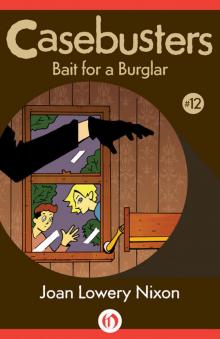 Bait for a Burglar
Bait for a Burglar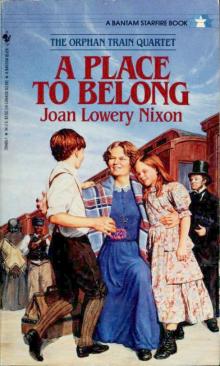 A Place to Belong
A Place to Belong Nightmare
Nightmare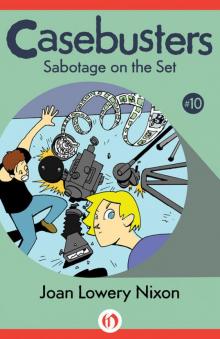 Sabotage on the Set
Sabotage on the Set The Other Side of Dark
The Other Side of Dark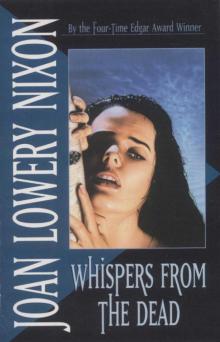 Whispers from the Dead
Whispers from the Dead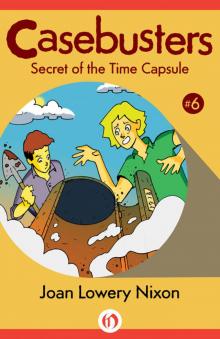 Secret of the Time Capsule
Secret of the Time Capsule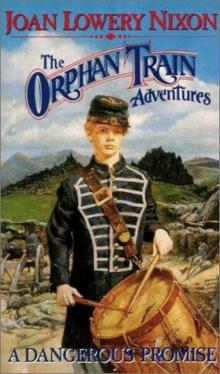 A Dangerous Promise
A Dangerous Promise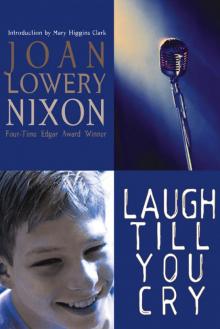 Laugh Till You Cry
Laugh Till You Cry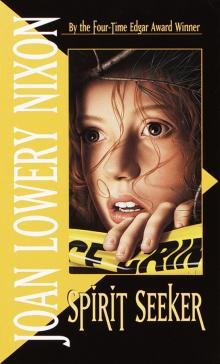 Spirit Seeker
Spirit Seeker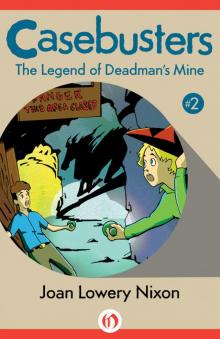 The Legend of Deadman's Mine
The Legend of Deadman's Mine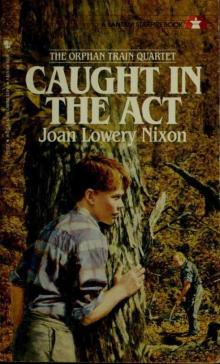 Caught in the Act
Caught in the Act Check in to Danger
Check in to Danger Ellis Island: Three Novels
Ellis Island: Three Novels The Name of the Game Was Murder
The Name of the Game Was Murder The Haunting
The Haunting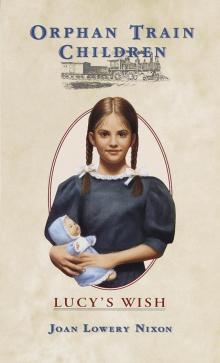 Lucy’s Wish
Lucy’s Wish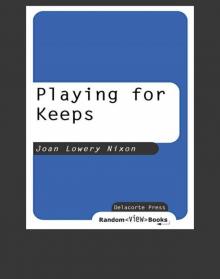 Playing for Keeps
Playing for Keeps A Family Apart
A Family Apart Nobody's There
Nobody's There Shadowmaker
Shadowmaker Backstage with a Ghost
Backstage with a Ghost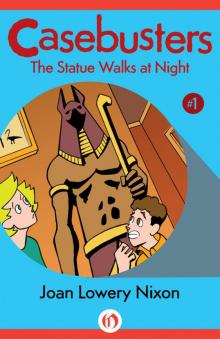 The Statue Walks at Night
The Statue Walks at Night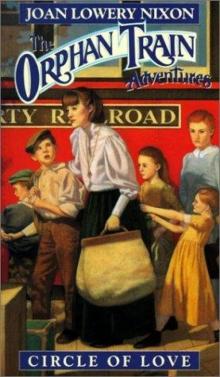 Circle of Love
Circle of Love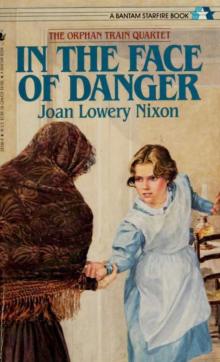 In the Face of Danger
In the Face of Danger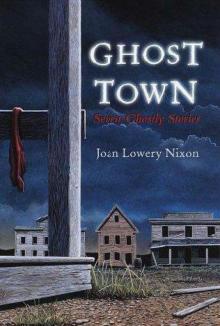 Ghost Town
Ghost Town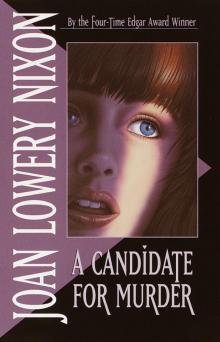 A Candidate for Murder
A Candidate for Murder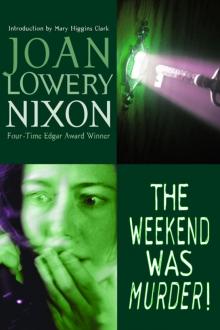 The Weekend Was Murder
The Weekend Was Murder The Island of Dangerous Dreams
The Island of Dangerous Dreams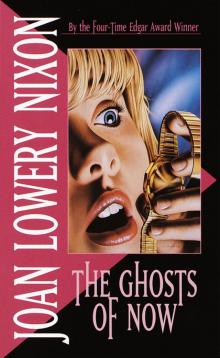 The Ghosts of Now
The Ghosts of Now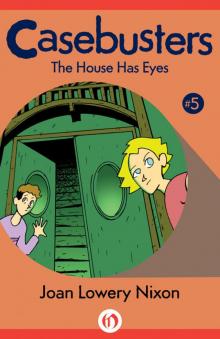 The House Has Eyes
The House Has Eyes The Dark and Deadly Pool
The Dark and Deadly Pool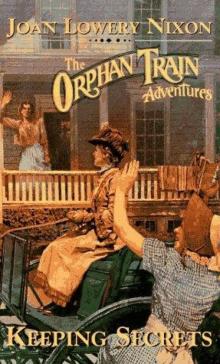 Keeping Secrets
Keeping Secrets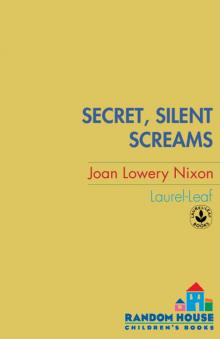 Secret, Silent Screams
Secret, Silent Screams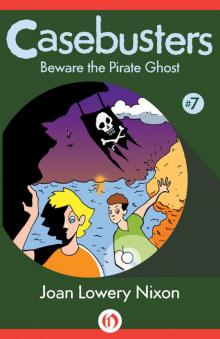 Beware the Pirate Ghost
Beware the Pirate Ghost Search for the Shadowman
Search for the Shadowman Haunted Island
Haunted Island